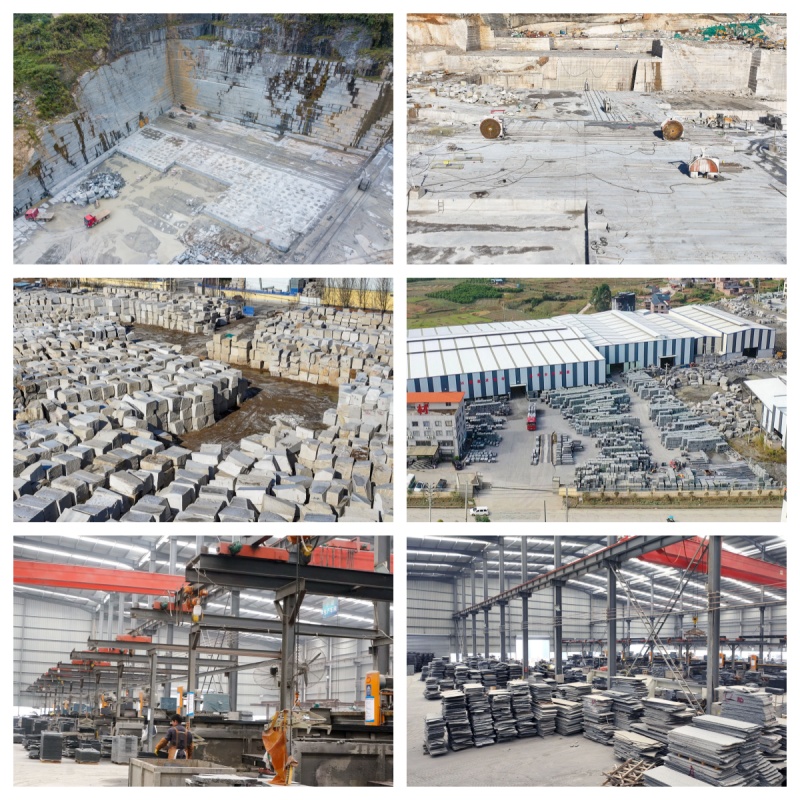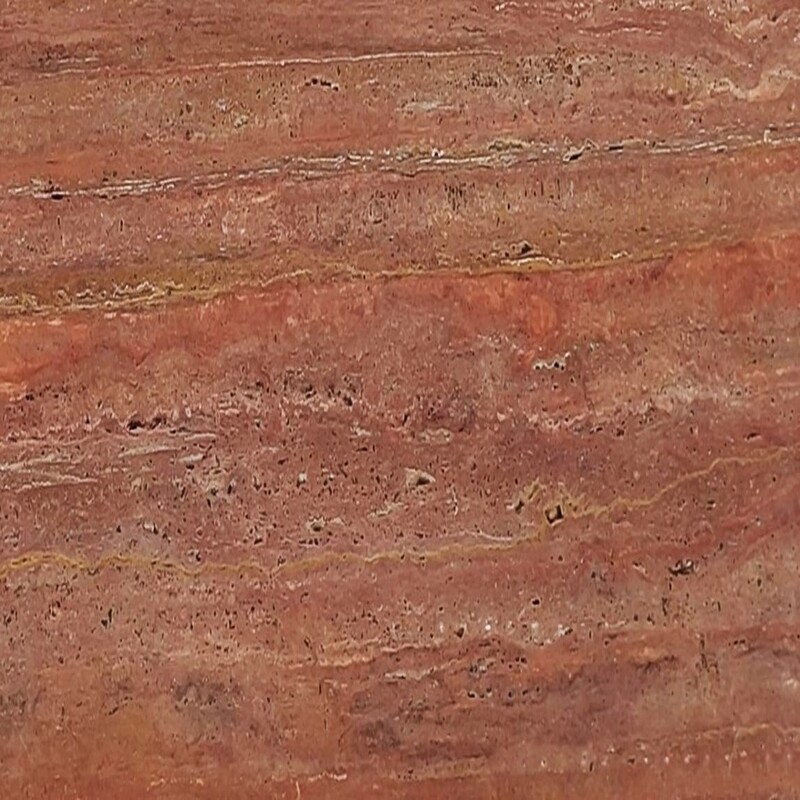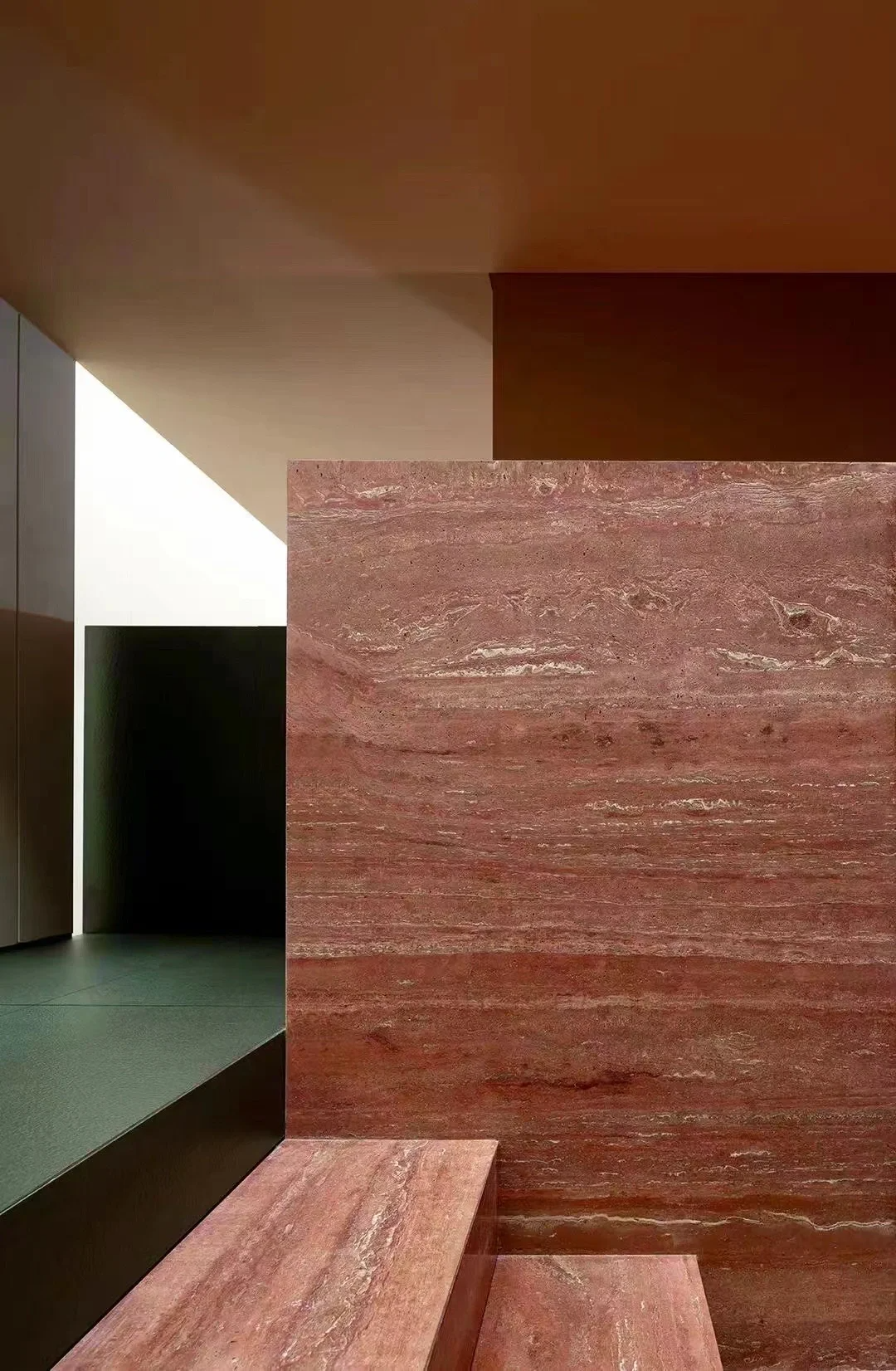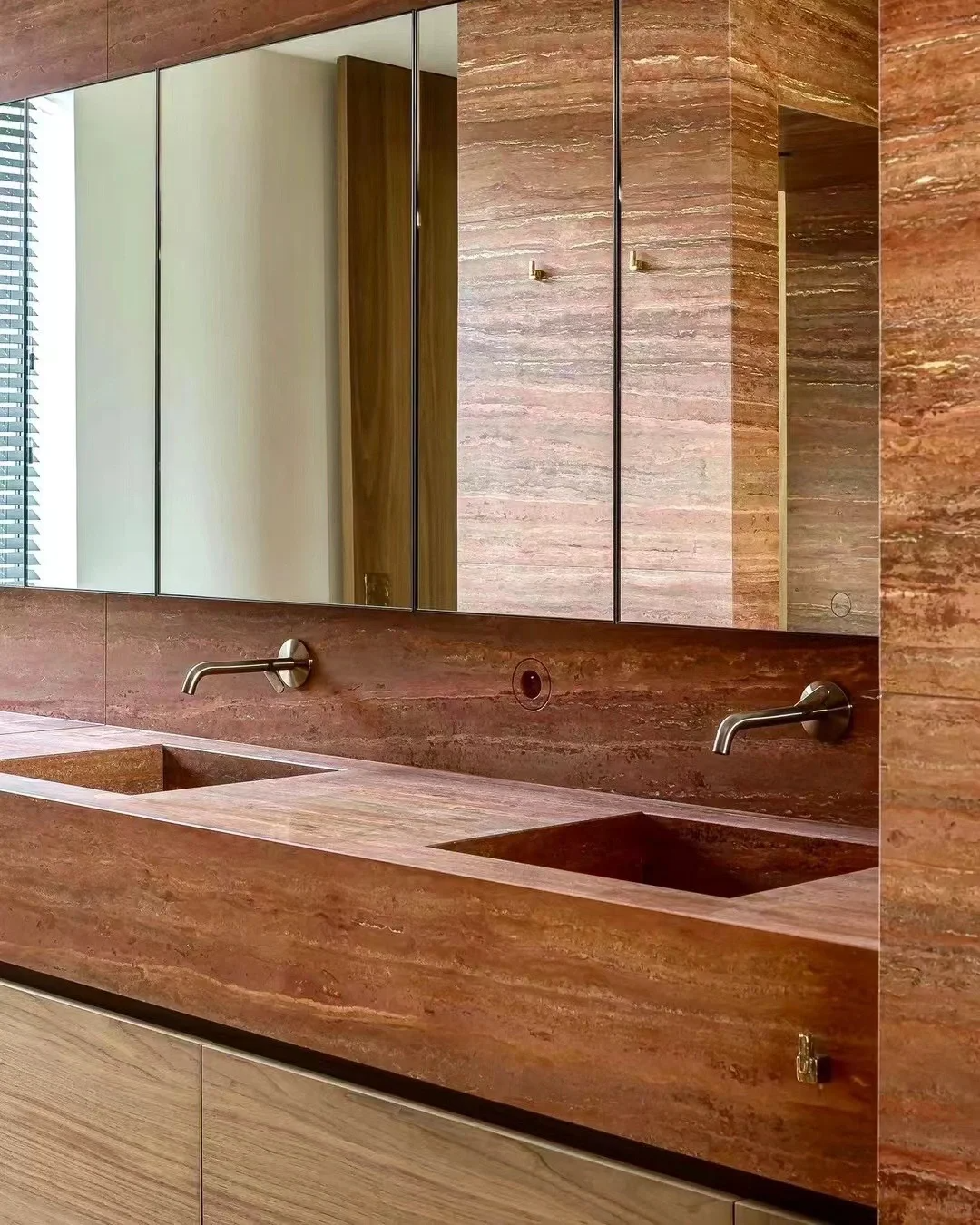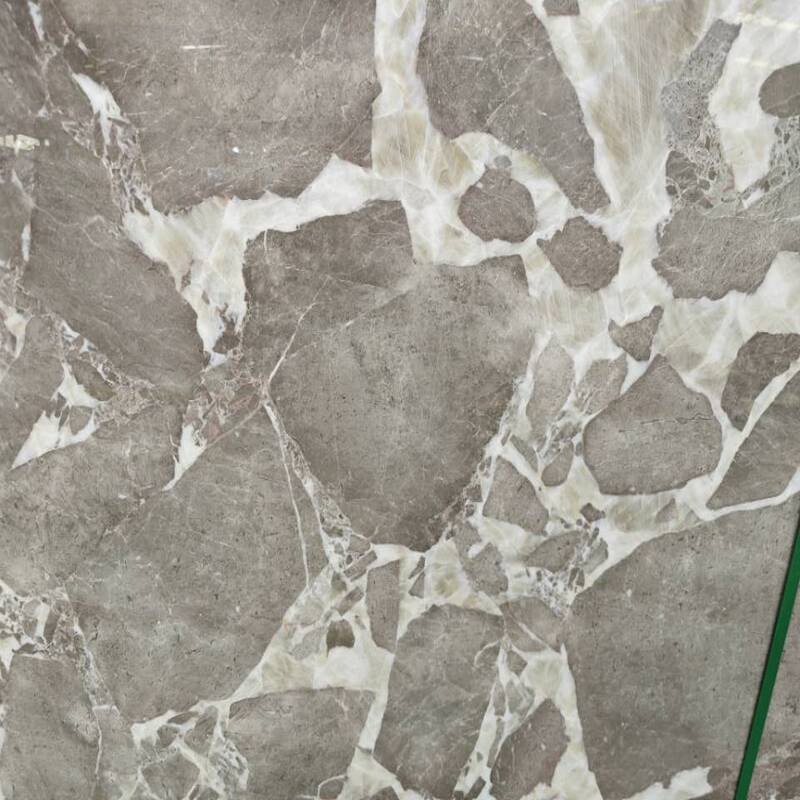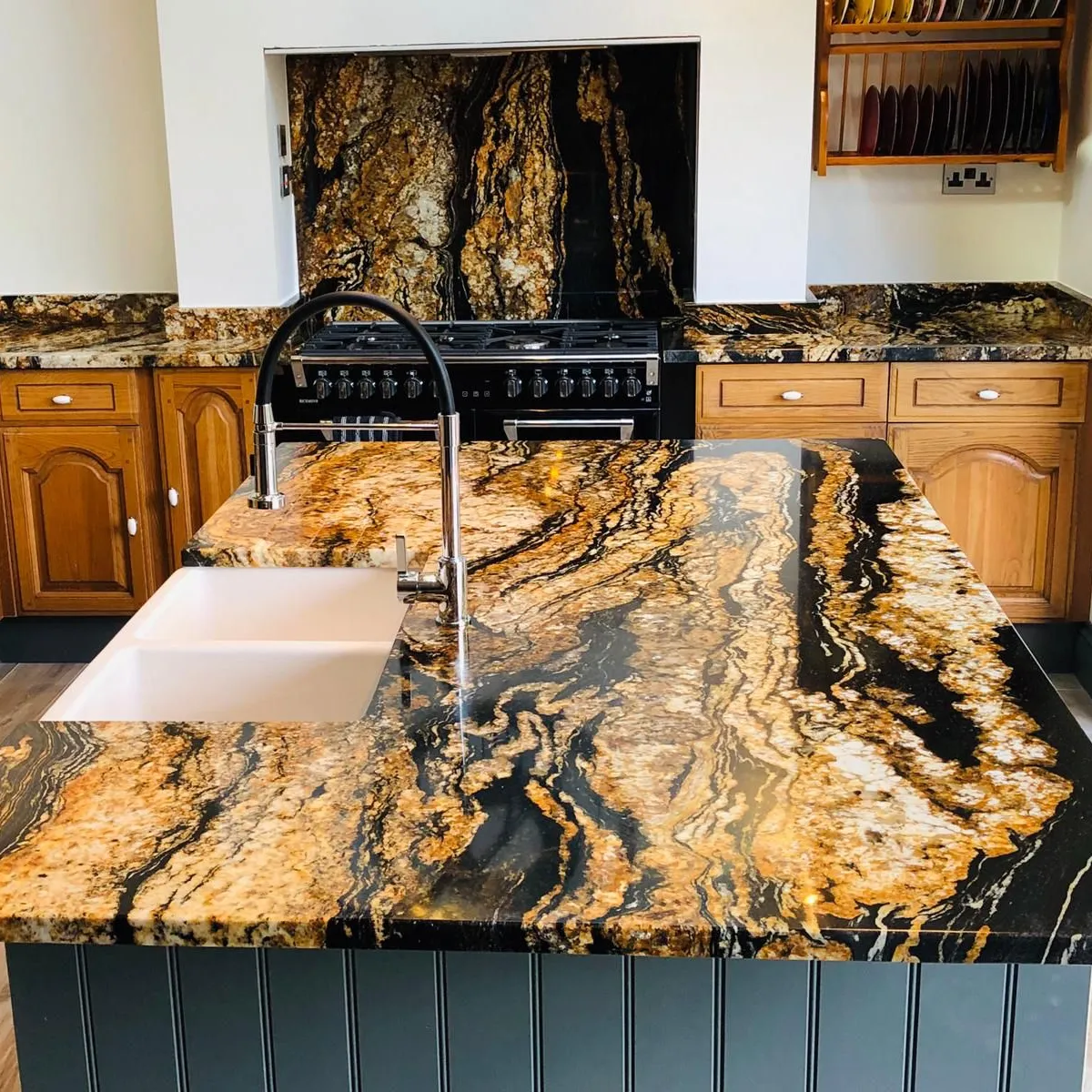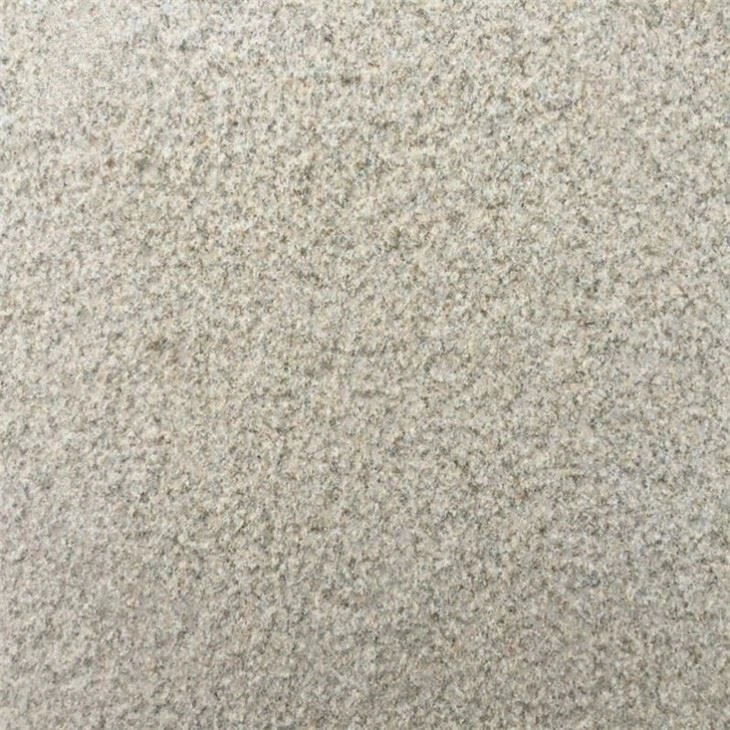DESCRIPTION
Description
Being a warm and sophisticated natural stone, Red Travertine is often used in architecture and design projects. Because it was created by mineral deposits left by hot springs, this unusual stone has a rustic yet attractive porous feel.
Red travertine comes in subtle blush tones as well as deep, rich reds, frequently with elaborate natural patterns that provide visual appeal and character. Any area is made cozier by its warm tones, which also provide a dramatic contrast with colder colors or materials.
Red travertine is quite versatile, which is one of its most appealing features. Both inside and outside, it is often utilized as a feature for flooring and wall cladding. While its classic elegance blends well with a variety of design styles, from conventional to modern, the stone’s durability and low care requirements make it appropriate for high-traffic areas.
Red travertine can have its surface polished for a smooth, glossy finish or honed for a matte, non-slip surface among other finishes. Easy filling and sealing made possible by its porous character can also give the stone a more uniform look while maintaining its inherent beauty.
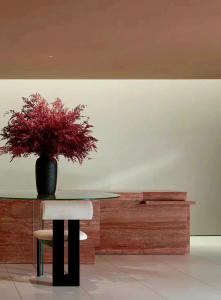
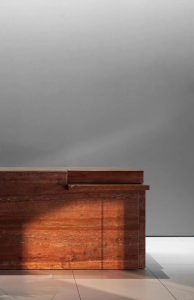
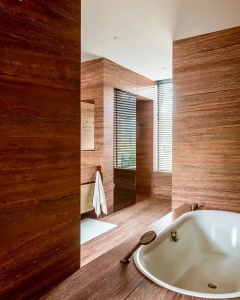
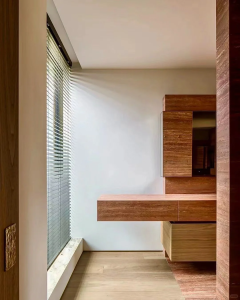
FAQ of Red Travertine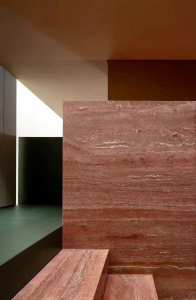
1. Where does red travertine come from?
Primarily from Iran, red travertine is produced by the precipitation of calcium carbonate left by mineral springs. The characteristic reddish-brown colouring and the possibility of tiny, dispersed pores on its surface give this sedimentary rock its own look and texture.
2.Is Red travertine an expensive stone?
In terms of price, Red Travertine is seen to be a mid-range to high-end natural stone.The size of the tiles or slabs, where it is sourced, and the quality of the stone can all affect how much it costs. Particularly when purchasing in quantity or straight from the manufacturer, certain vendors could have competitive pricing.The installation technique might also have an impact on the total cost because red travertine is porous and frequently needs particular sealing and care.Although it might not be the priciest stone available, most people consider it to be a premium option for projects requiring a natural and sophisticated material.
3.The Difference Between Travertine and Marble?
Beautiful and well-liked natural stones used in architecture and building, marble and travertine differ greatly from one another.
Origin and Formation: After time, limestone exposed to high temperatures and pressures metamorphoses into marble. This procedure produces a polished, uniformly textured, dense, hard stone with frequently swirling or veining patterns.
Conversely, travertine is a kind of limestone sedimentary rock. Hot springs in particular deposit calcium carbonate, which forms it. The porous nature of travertine is well-known; it is characterized by little openings or voids that can be filled in during finishing.
Physical Features: High traffic areas like floors, countertops, and cladding are perfect for marble because of its well-known toughness and wear resistance. Its glossy, polished appearance is another factor in its popularity for its creative adaptability.
Because it is permeable, travertine—while likewise robust—is more often linked to its rustic charm. Traditionally employed in places where the outside environment or the aesthetic of a more natural, less polished look is sought, it frequently needs sealing to avoid discoloration.
Aesthetics & Finishes: Marble can be honed for a matte finish or polished to a high gloss in a multitude of hues and patterns. Rich and elegant, it is a favourite option for opulent settings.
With its distinctively pitted surface, travertine has a more natural and rustic appeal. Tumbled for a rough, aged look, or filled and polished to produce a smooth, matte surface are common uses. Generally speaking, travertine has earthier, more subdued colors than marble’s vivid ones.
Use: High-end uses, such as opulent residences, hotels, and commercial buildings, have long chosen marble. Designers love it for its ageless beauty and prestige.
We choose travertine because of its informal, natural look as well as its endurance. Applications outside, pool borders, and interior areas where a warm, natural appearance is desired all frequently employ it.
In conclusion, the decision between marble and travertine depends on the intended appearance, maintenance issues, and particular application requirements, even if both materials have special advantages and aesthetic aspects. Marble exudes elegance and richness, but travertine has a more approachable, natural appeal.
Dimension
| Tiles | 300x300mm, 600x600mm, 600x300mm, 800x400mm,etc. Thickness: 10mm, 18mm, 20mm, 25mm,30mm, etc. |
| Slabs | 2500upx1500upx10mm/20mm/30mm, etc. 1800upx600mm/700mm/800mm/900x18mm/20mm/30mm,etc Other sizes can be customized |
| Finish | Polished, Honed, Sandblasted, Chiseled, Swan Cut, etc |
| Packaging | Standard Export Wooden Fumigated Crates |
| Application | Accent walls, Floorings, Stairs, Steps, Countertops, Vanity tops, Mosics, Wall panels, Window sills, Fire surrounds, etc. |
Why Funshine Stone Is A Reliable And Preferred Partner For Your Marble Needs
1. Quality Products: Funshine Stone is probably best recognized for offering premium marble products, guaranteeing that clients get long-lasting and exquisite materials for their projects.
2. Large Selection: Customers can select the ideal match for their particular design requirements from a large selection of marble categories, colors, and finishes provided by a trustworthy partner.
3. Customization Services: Customers can have the marble pieces sized, shaped, and designed any way they see fit by using the customization services offered by Funshine Stone.
4. Trusted Supply Chain: Project completion time and delays are reduced when a trusted partner guarantees a steady supply of marble.
5. Project Management: To guarantee that every stage of the project—from selection to installation—is skillfully managed, Funshine Stone may provide full project management services.
